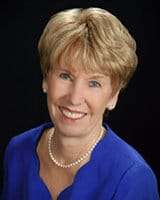
Several years ago I was contacted by a dentist who was desperate to sell his practice. Although he already had a nonexclusive listing with another broker, he also agreed to list his practice with me in an exclusive listing, which meant that I would receive a commission even if the other broker sold the practice. (I told you he was desperate.)
We quickly received a full price offer for the practice. Shortly afterward, we got a call from the buyer telling us that he had seen the practice advertised by the other broker at a $100,000 lower price. So he lowered his offer by $100,000 since the practice was being advertised at that lower price.
Why was the other broker listing the practice for $100,000 less? The reason is that the practice was a newly-started practice, and it experienced very rapid growth in the early years. The other broker had valued the practice several years earlier and had not updated the practice financials in several years. So while the numbers were appropriate when it was first listed, they were seriously out of sync with the current practice revenues.
This seller's experience of dealing with multiple brokers points out how expensive an open listing can be, especially if one of them does not do biannual updates and provide current financials.
As one broker put it, "We all fish out of the same pond," which questions the benefit of open listings. Brokers all talk to the same prospects, so the expectation that more brokers mean more prospects is without merit. Serious brokers market extensively through websites, contacts, referrals, etc. to develop purchaser prospects, and purchasers have no problem finding all brokers who might have a practice for sale. Most brokers are already in contact with nearly every prospect.
The problems with an open listing begin when a prospect hears about a practice three or more different ways from three or more different brokers. It's doubtful that any two of those listings even sound as if they are about the same practice. The results of three people trying to sell a practice to a single candidate are disastrous, and what could have been a well-managed sale by a single, competent broker can quickly disintegrate into chaos, and frequently a lost sale.
Consider also that when sellers are not committed to brokers, brokers will not be committed to them either. So these sellers will be at the bottom of several brokers' lists rather than at the top of any one broker's list. A seller with an exclusive listing should expect commitment from his or her broker, and if that broker does not make a committed best effort, there should be provisions for termination.
When a sale finally does take place, a seller may face another serious dilemma. Remember, "We all fish out of the same pond," so a seller may be told by two or three brokers that they were the one to identify a buyer and they should receive the commission. It is not unheard of that lawsuits and all manner of legal actions arise from what should have been a happy closing.
Open listings are even worse for brokers, who put in their time, talent, and money, only to end up helping the seller close a sale of his own doing. After all, sellers have the broker's commission to bargain with.
This leaves us with the question: What is the best approach for listing a practice for sale? When sellers ask about having an open listing and engage every broker out there to try to sell their practice, I share issues discussed here with them. I tell them they will be better off with one mutually committed broker relationship, even if it isn't with me. My best suggestion is that they exclusively list with a broker who has a network of resources that includes other brokers, and that the broker be willing to pay a fee to any referrers who provide a buyer. This provides the benefit of exposure to multiple brokers and still maintains a unity of effort, which leads to the absolute best selling experience.

 Add me to your address book
Add me to your address book



